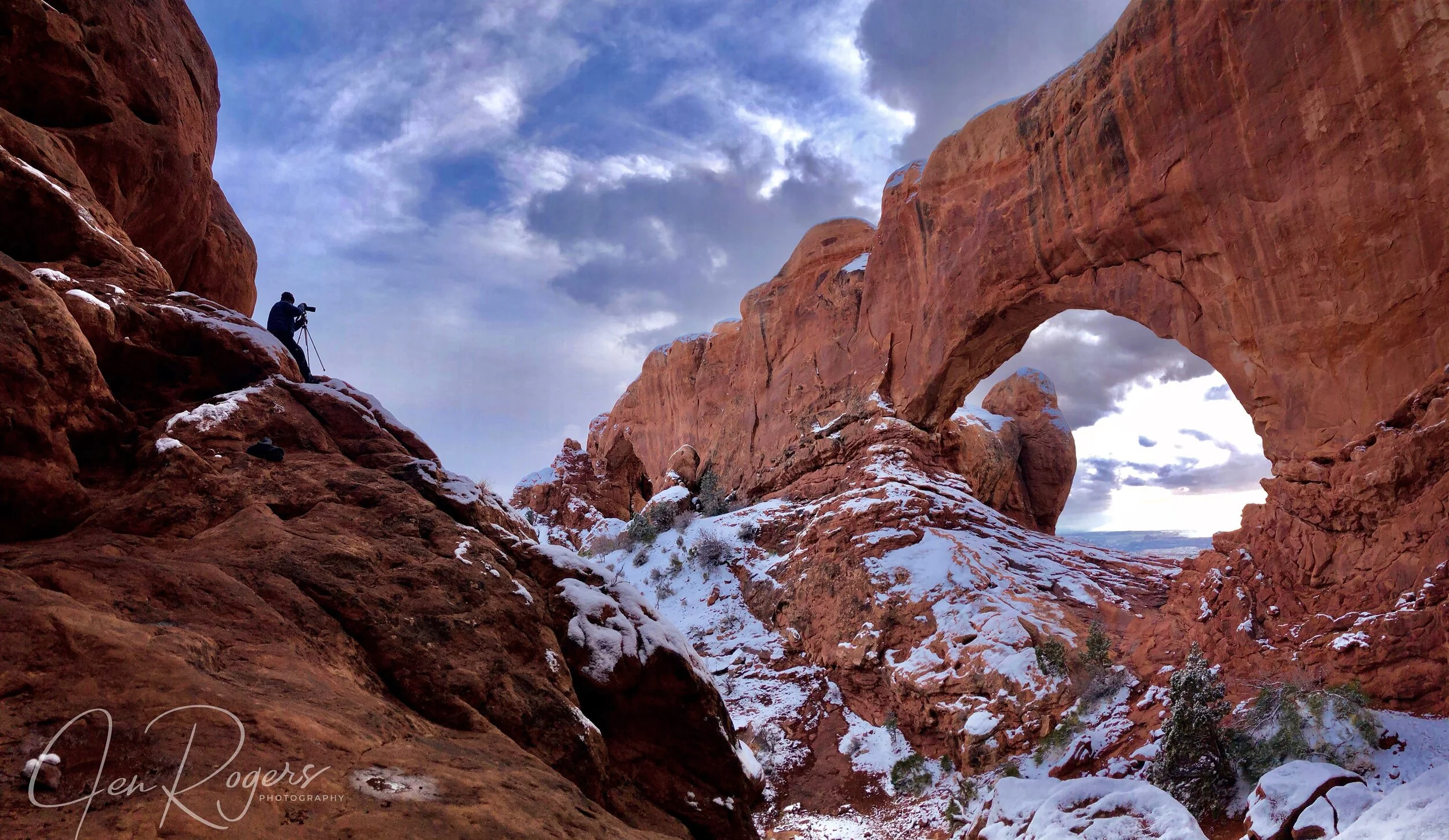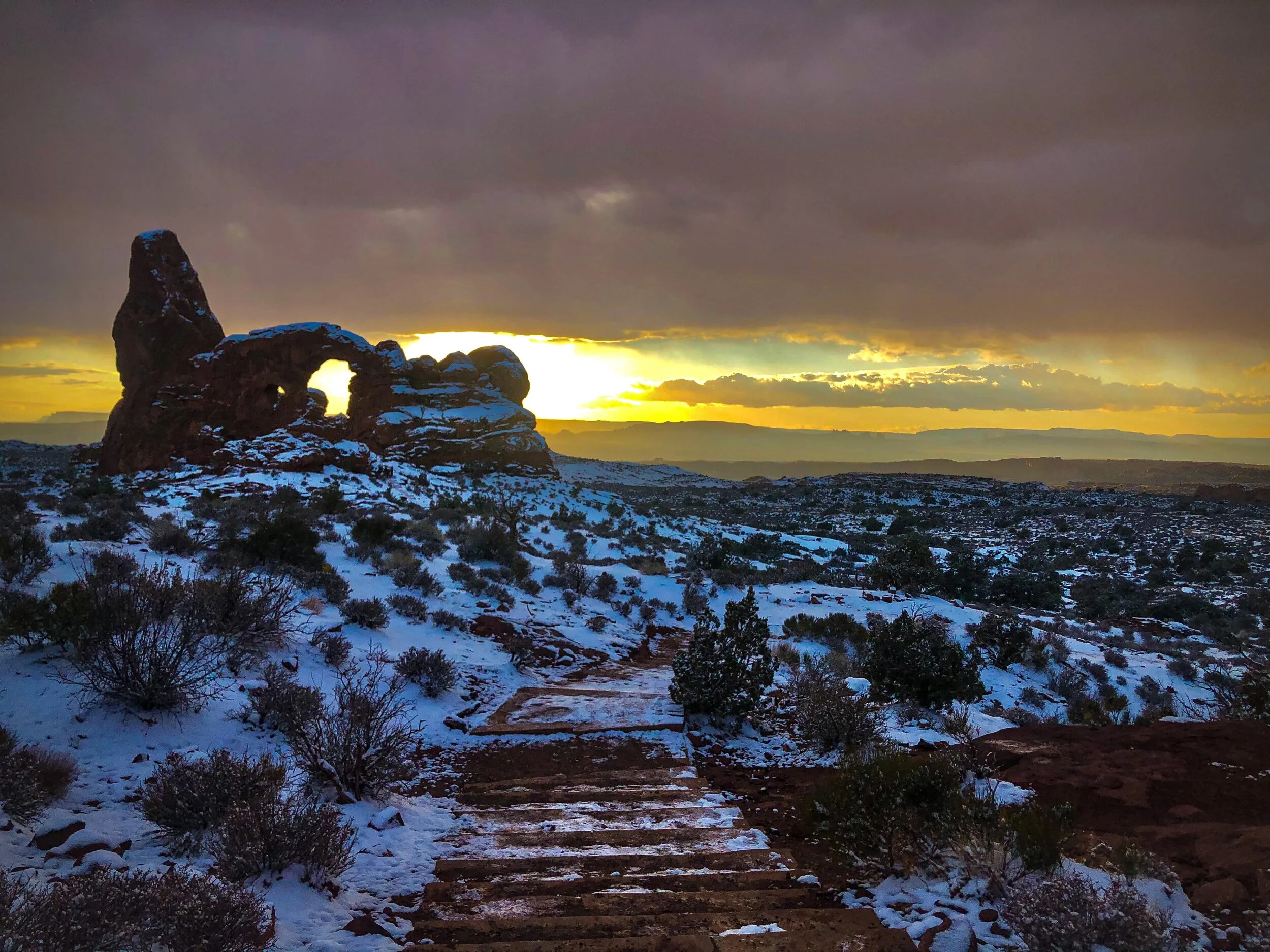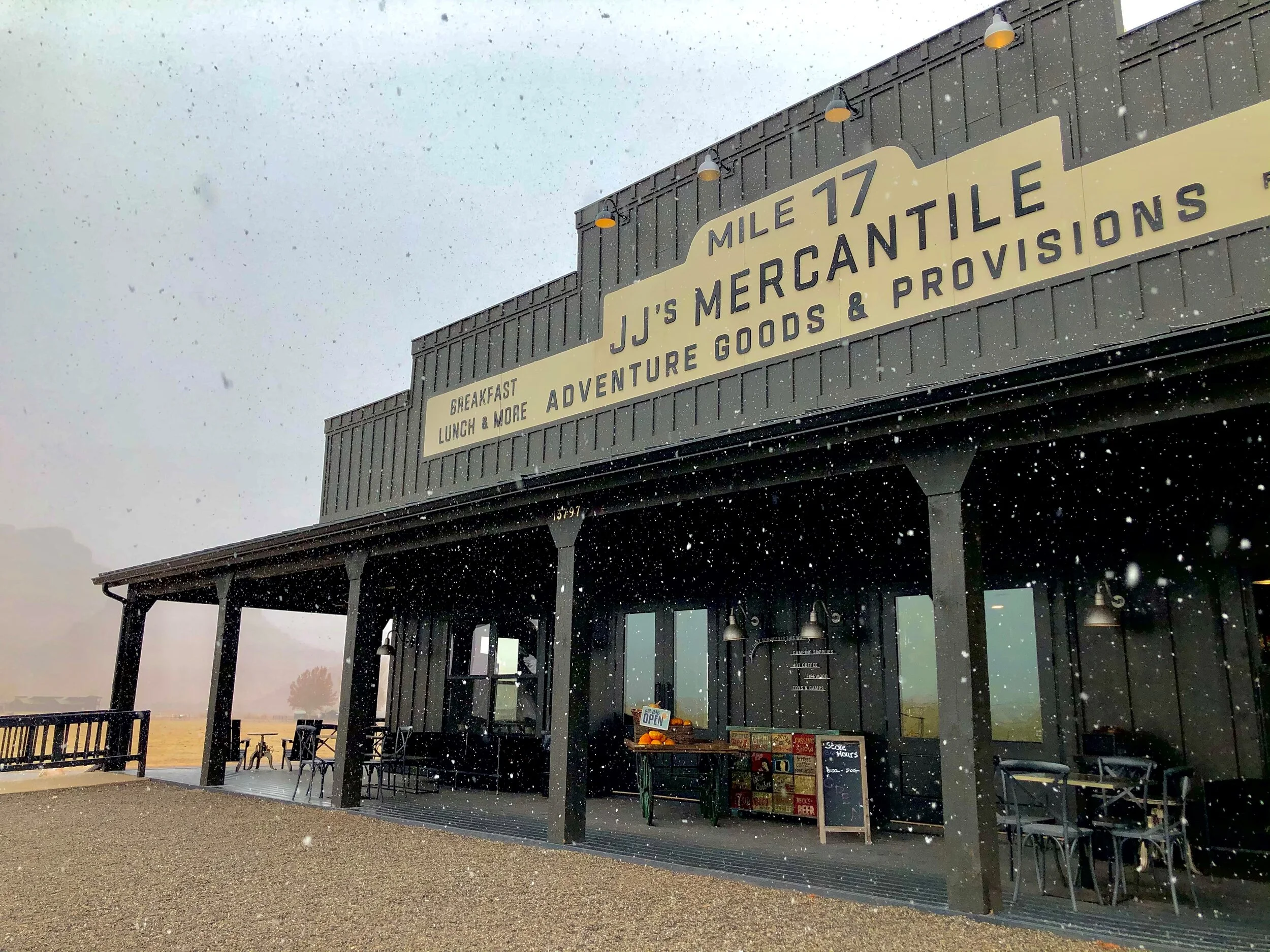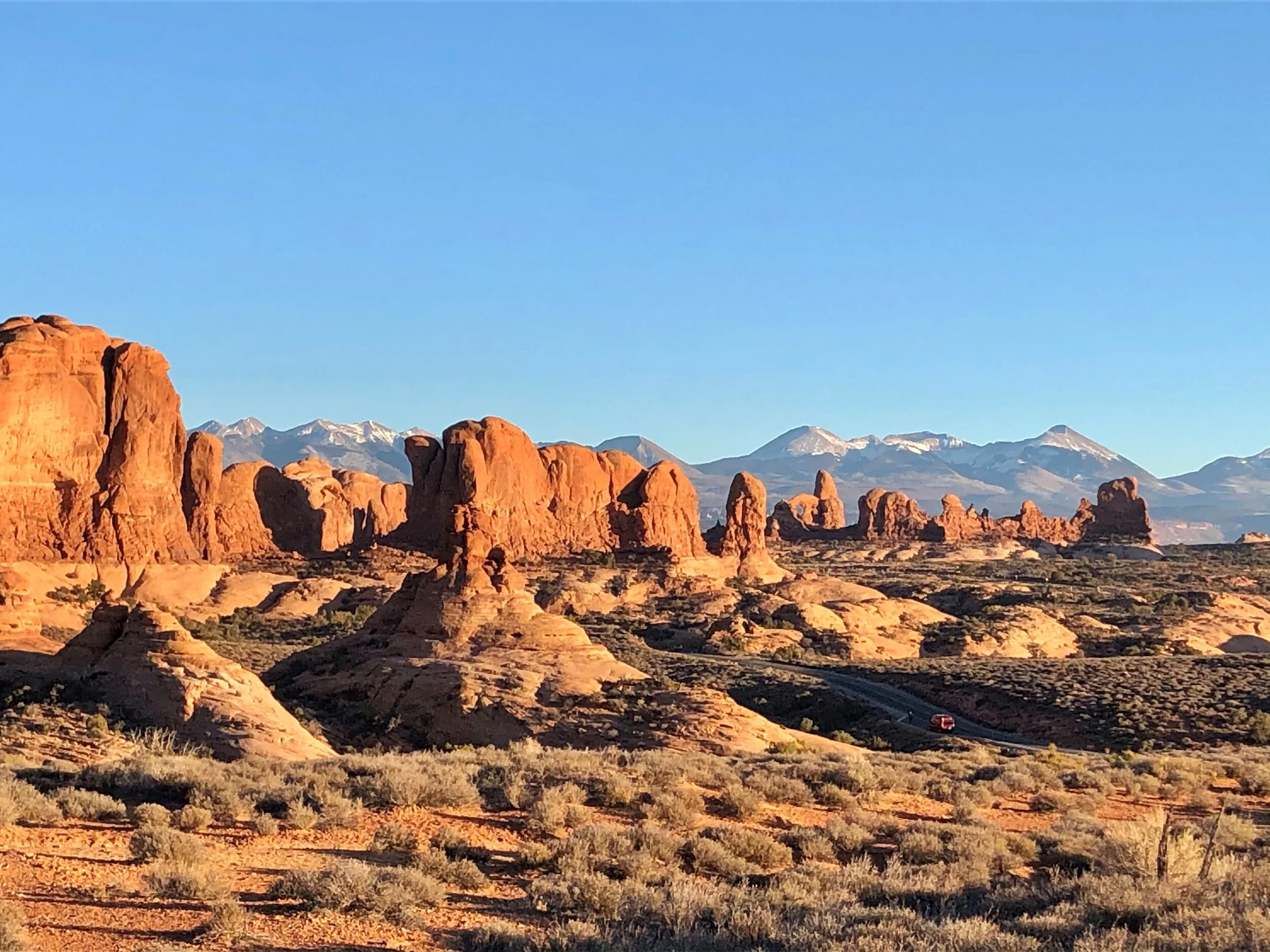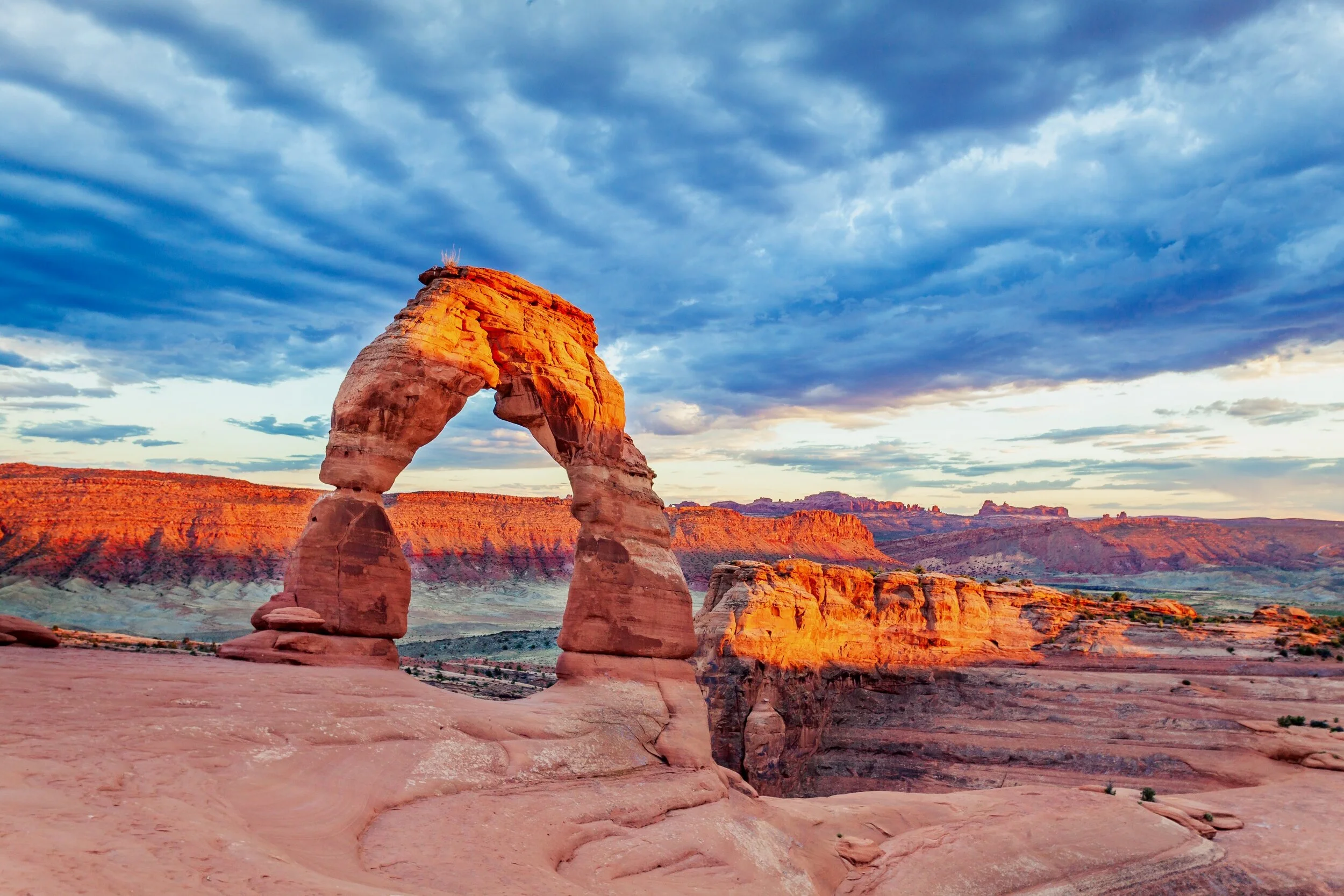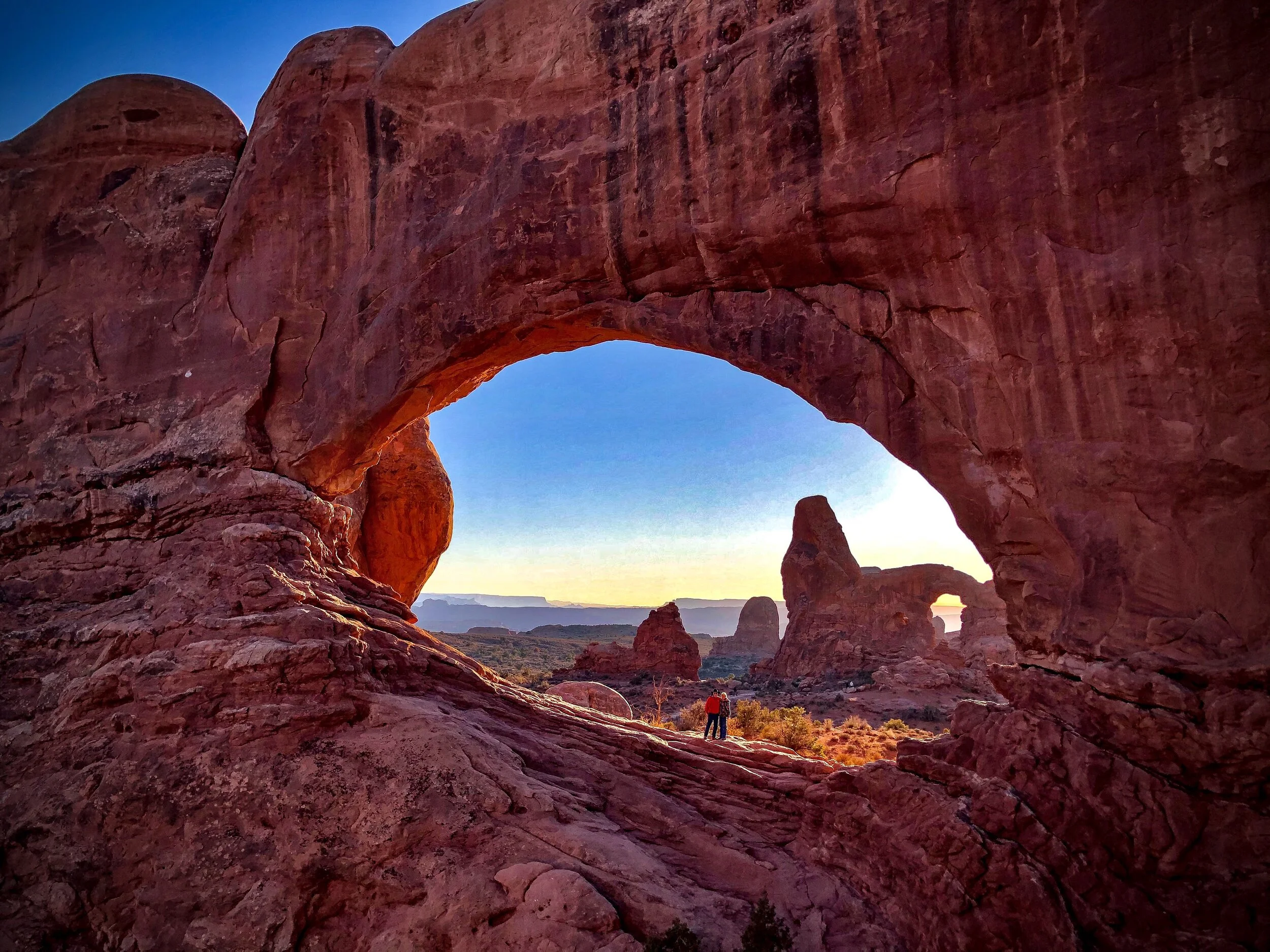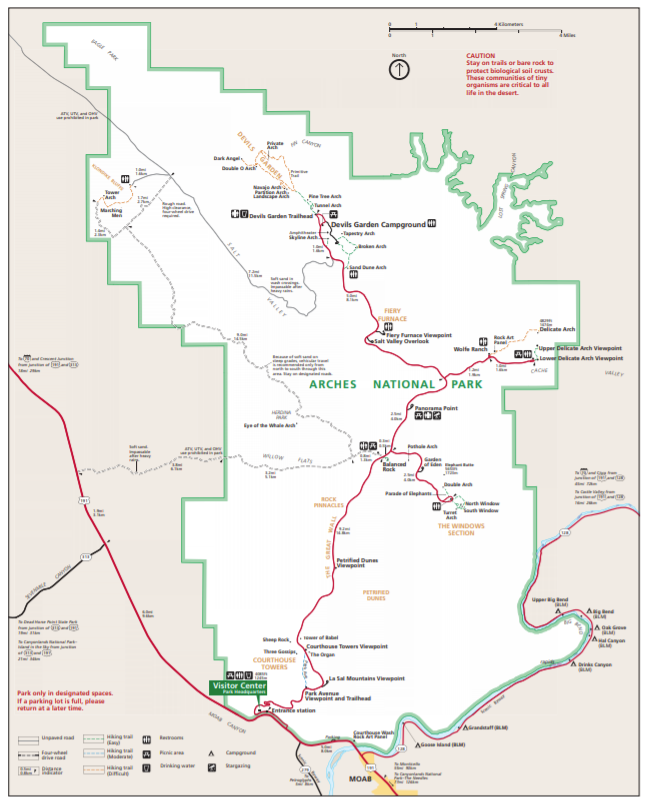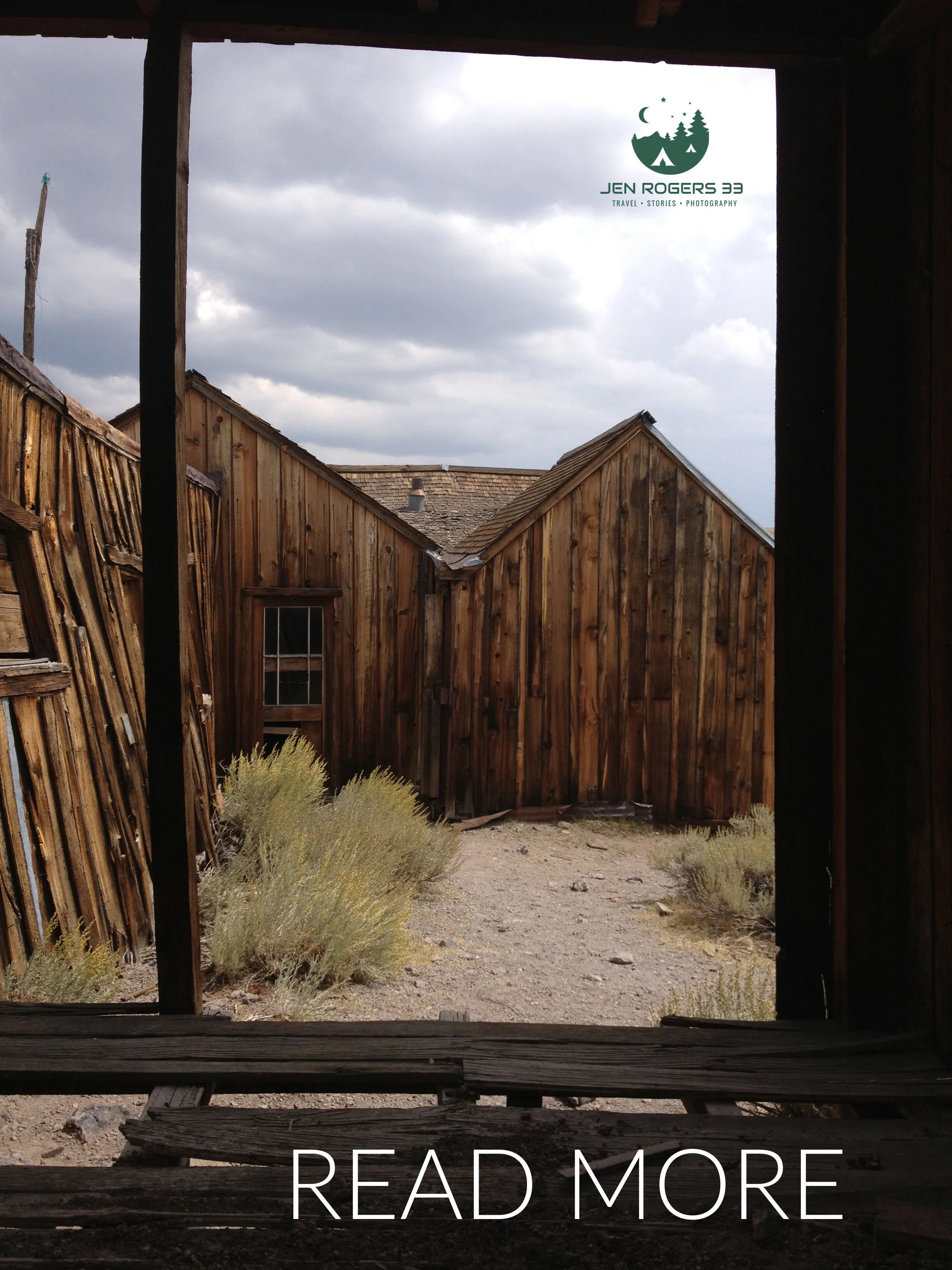Visiting Arches National Park
THE DENSEST CONCENTRATION OF NATURAL STONE ARCHES IN THE WORLD
Just north of Moab in southeastern Utah lies one of the most incredible national parks in the US, Arches National Park. With over 2,000 documented arches, it has the densest concentration of natural sandstone arches in the world. It is over 70,000 acres of arches, fins, pinnacles, hoodoos and balanced rocks. A geological heaven if you will, and if you are brave enough to fight the freezing winter temps, you might just be lucky enough to experience the fiery red sandstone dusted in white snow against a backdrop of cloud-filled blue skies. A true winter wonderland.
[Note: This post may contain affiliate links.]
KNOW BEFORE YOU GO
Operating Hours & Fees
The park is open year-round, 24 hours a day.
Entrance fees (subject to change) are as follows:
Private Vehicle - $30
Motorcycle - $25
Pedestrian or Bicycle - $15 per person
You can also purchase several types of annual passes including the Southeast Utah Park Pass, the America the Beautiful Annual National Park Pass, and the 4th Grade National Park Pass.
Fee Free Days:
National parks across the country waive park entrance fees on special fee free days each year which typically include the following:
Martin Luther King, Jr. Day (3rd Monday of January)
National Park Week (usually in April)
First Anniversary of the Great American Outdoors Act (August 4)
National Park Service Birthday (August 25)
National Publics Lands Day (September 25)
Veterans Day (November 11 in honor of the “eleventh hour of the eleventh day of the eleventh month” in 1918 which signaled the end of WWI - Armistice Day)
Weather
Arches is located in southeast Utah, which is part of the Colorado Plateau, a high desert region where temperatures can vary as much as 40° F in a single day. Being prepared is key.
Winters in Arches can be very cold with highs averaging 30° to 50° F, and lows averaging 0° F to 20° F. Large snow falls are rare, but it doesn’t take much to create icy trails and make some roads impassable. Always be sure to check road conditions before you go.
Summers in Arches can be scorching hot with temps often exceeding 100° F. This almost, what I find to be, unbearable heat is often accompanied by late summer monsoons that can create flash floods. Be sure to check road conditions as roads may be flooded, and bring plenty of water if you’re brave enough to tough it out. Personally, you won’t find me there that time of year. Just saying!
Fall and Spring are the perfect time to visit Arches although the park gets quite crowded during these temperate seasons where highs average 60° F to 80° F, and lows average 30° F to 50° F. To avoid heavy traffic, try to arrive before 8 am or after 3 pm during these seasons. Despite the crowds, it is absolutely worth visiting. Places are usually crowded for good reason - it’s magical!
For more detailed information on weather, click here.
For sunset and sunrise times, which are really important to know if you want amazing photographs, click here.
WHERE TO STAY
Camping Within the Park
The park has a single campground located within its boundaries known as Devils Garden Campground. The campground offers 51 sites which can be reserved from March 1 through October 31. From November to February, the campground is first come, first serve but still fills up quickly. Sites include 2 group sites and 1 accessibility site.
For reservations, click here.
Camping Outside the Park off Highway 128
During the busy season, Devils Garden Campground is usually full every night so unless you have a reservation, you will most likely have to camp outside the park. Fortunately, there are quite a few options. Here are just a few that are off beautiful Highway 128 to choose from.
Big Bend Campground
Drinks Canyon Campground
Goose Island Campground
Grandstaff Campground
Hal Canyon Campground
Lower Onion Campground
Oak Grove Campground
Upper Big Bend Campground
Upper Onion Creek Campground
For more information, click here.
(Photo: Mercantile on a snowy day)
If you find yourself camping off scenic Highway 128, be sure to stop by J.J.’s Mercantile Adventure Goods & Provisions at Mile 17.
I just love this cute little small-town country shop set against a red rock backdrop that offers fun and unique gifts and souvenirs as well as farm fresh groceries, homemade baked goods and fresh coffee. You can even grab a sandwich or salad for lunch.
Hotels/Motels
The closest city to Arches NP is Moab which offers many options for accommodations including hotels, motels, B&Bs and vacation rentals.
THINGS TO DO
Arches Petrified Dunes
Just east off the park road between Courthouse Towers and the Windows Area are the unique petrified sand dunes. A site where ancient sand dunes once covered the landscape. Over time, the sand drifts became covered in layers of sediment, compressing them and cementing them into hardened rock. The overlaying subsequent material eroded away with time exposing the original hardened dunes. The dunes are about 0.5 miles out and require cross-country hiking as there is no trail to them. Don’t worry, it’s hard to get lost out there but if you do, just head west and eventually you’ll hit the main road.
Hiking & Arch Viewing
Broken Arch Trail – 2 miles, easy. Popular loop that leads to a sandstone arch. The arch is not actually broken but it is wearing thin across the middle.
Photo courtesy of Glenn Klevens
Delicate Arch Trail – 3 miles, moderate, heavily trafficked. A hike to the most iconic arch in the park that you will no doubt recognize as the arch featured on Utah state license plates.
The incredible arch stands 52 feet tall and is quite magnificent. The trail includes some steep grades, takes you steadily uphill and climbs 480 feet in elevation. Along the way, you will pass the Wolfe Ranch cabin and Ute petroglyphs. This arch is a great place to watch the sunrise.
There is also a shorter hike to a lower viewpoint that offers a distant view of Delicate Arch.
Devils Garden Primitive Loop Trail – 7.2 miles, moderate to difficult. The longest, most challenging hike in the park that takes you to both Landscape and Double O Arches. The trail is mostly sand with a high ledge that you have to climb up. If you are looking for solitude, this is the hike for you.
Double Arch Trail – 0.8 miles, easy. Popular hike ending beneath a majestic double arch. It is located in the Windows section of the park and just about anyone can hike it.
Double O Arch – 4.2 miles, moderate. A hike to two arches, one sitting on top of the other. A truly unique site and one of the largest arches. The top arch has a 71-foot span and sits atop a second arch with a 21-foot span. It is really quite beautiful.
Fiery Furnace Trail – 2 miles, moderate. You must have a permit or take a ranger led hike to experience this area of the park to protect this rare desert environment. Time your hike around sunset when the area takes on a reddish glow much like a fiery furnace.
Landscape Arch Trail – 1.6 miles, easy. A beautiful hike to the largest arch in the park. The opening of this arch spans 306 feet across and the arch itself is just a narrow ribbon, only 6 inches thick at its narrowest point.
Park Avenue Trail – 1.8 miles, easy, heavily trafficked and great for seeing wildflowers in the Spring. Located near the park entrance, this trail includes spectacular views of fins and towers that resemble skyscrapers much like New York City hence the name. The hike provides incredible views of The Three Gossips, the Courthouse Towers, Queen Nefertiti and Queen Victoria Rock, the Organ and the Tower of Babel.
Tower Arch Trail – 3.4 miles, light traffic, moderate to difficult. The trail leads to one of the most secluded arches in the park. Located in the northwest end of Arches, the trail takes you through quite a few ups and downs behind the Klondike Bluffs. The arch itself is quite large with a 92-foot span.
Windows Primitive Loop & Turret Arch Trail – 1 mile, easy. A scenic hike past three separate arch formations. This is often referred to as the Windows Section of the park and is incredible to see. For me, this is a must see and almost anyone can hike it.
For more information on hiking Arches, click here.
Stargazing
Arches was designated an International Dark Sky Park in 2019. On a clear night, you can experience a magnificent dome full of bright twinkling lights from just about anywhere in the park although the skies get darker the further north you go since you are getting farther away from Moab. Some of the best places for stargazing within the park (with the help of some Google research) include the following:
Balanced Rock Picnic Area
The Windows Section
Garden of Eden Viewpoint
Panorama Point
Stargazing Tips:
Visit during a new moon or time your evening full of stargazing before the moon rises over the horizon in order to get the darkest skies and brightest stars.
Bring a blanket and a thermos with hot water, hot chocolate or (preferably) something warm and spiked.
Bring binoculars especially for viewing planets. It’s amazing how much better they work than the naked eye.
If you need a light, use your red-light mode on your headlamp. It can take eyes 15 to 20 minutes to adjust to the darkness so every time you turn on that bright white light headlamp, flashlight or even car headlights, you are quite literally blinding yourself and hindering your natural night vision. (Side note: I just learned that using lights to illuminate rocks and landscapes is actually prohibited - who knew!)
Bring a star chart or download a stargazing app on your phone like Night Sky or Sky View. Note that some apps do require an internet signal.
Good House Keeping Magazine has a great list of the top 15 stargazing apps.
Scenic Drive
Driving the approximately 20-mile scenic road through the park (approximately 40 miles round trip) is truly magical. The road winds around the park allowing you to take in panoramic views of red rock with plenty of places to stop for photos along the way. The drive allows you to explore the park and take in all of its beauty without ever having to leave your car although you will no doubt want to.
Be sure to stop at all of the major viewpoints including the following:
Park Avenue and Courthouse Towers – If you do not want to hike here, you will still want to make a quick stop at the Park Avenue Viewpoint to snap a few photos. You can also see The Three Gossips, the Courthouse Towers, Queen Nefertiti and Queen Victoria Rock, the Organ and the Tower of Babel. from the road.
Windows Area – Be sure to see Balanced Rock and Double Arch, 2 giant arches that share the same foundation. The Windows Area has the highest concentration of natural arches in the world and hiking around near the parking lot is short and easy.
Delicate Arch – Even if you’re not up for the trek out to Delicate Arch, or even the lower viewpoint which is a steep short hike up, you can still see this magnificent arch in the distance from a viewpoint that is very close to the parking area (and there are restrooms).
Fiery Furnace Viewpoint – Only 0.2 miles from the parking lot is the viewpoint where you can see abundant wildflowers in Spring.
If you decide to tour Arches solely by car, still leave yourself at least 4-5 hours as you will no doubt want to stop and linger often.
For a printable PDF map of Arches National Park, download a copy of the NPS official Arches National Park Guide.
Read More…
Featured Articles:
“The Top 5 National Parks in the Western US” featured on We Are Travel Girls!
Visiting Canyonlands National Park
Looking for a park? Visit my complete list of All U.S. National Parks

